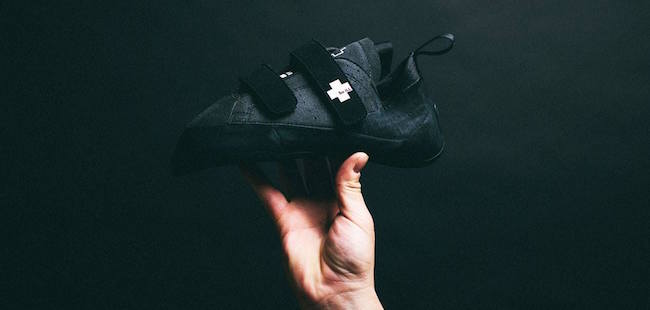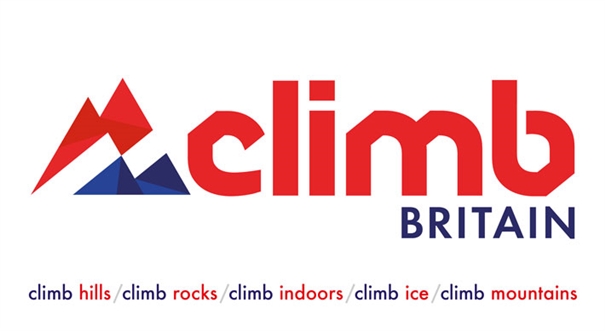
New Branding for UK Climbing Federation

Navigating Intellectual Property Law
 By Jason Stearns, Attorney with Phelps Dunbar, LLP
The climbing industry is extremely competitive. After all, this is an industry comprised of people that seek out obstacles for the sheer purpose of overcoming them. It should come as no surprise to learn that the climbing hold manufacturing industry is just as competitive. Whether the goal is to climb the ranks of CBJ’sGrip List™ or to come out with routesetters’ favorite new line of holds, new and established hold manufacturers alike are vying for a spot at the top.
The million dollar question that every climbing hold company should be asking is what can be done to protect its intellectual property and maintain a competitive advantage in the industry? Is it the unique texture of the hold? Is it the quality and durability of the hold? Is it a particular design, shape, or color of the hold? Or is it the name recognition attached to a particular brand that propels a climbing hold manufacturer to the top?
The reality is that all of these things matter. This article should serve as a checklist to help you navigate the treacherous intellectual property terrain that even the most fearless rock climbers dare not go alone — or, at least without some reliable “legal beta.”
The primary focus of this article will be on establishing and protecting a company’s brand through the use of trademark law. Although the article focuses on the climbing hold industry, these legal issues impact all types of companies in the climbing industry — from gear manufacturers to shoe designers, and, of course, climbing gyms. In addition to trademark law, this article will also touch briefly on some other, more technical, applications of patent and trade secret law that companies should consider to protect their innovative technology and confidential information.
By Jason Stearns, Attorney with Phelps Dunbar, LLP
The climbing industry is extremely competitive. After all, this is an industry comprised of people that seek out obstacles for the sheer purpose of overcoming them. It should come as no surprise to learn that the climbing hold manufacturing industry is just as competitive. Whether the goal is to climb the ranks of CBJ’sGrip List™ or to come out with routesetters’ favorite new line of holds, new and established hold manufacturers alike are vying for a spot at the top.
The million dollar question that every climbing hold company should be asking is what can be done to protect its intellectual property and maintain a competitive advantage in the industry? Is it the unique texture of the hold? Is it the quality and durability of the hold? Is it a particular design, shape, or color of the hold? Or is it the name recognition attached to a particular brand that propels a climbing hold manufacturer to the top?
The reality is that all of these things matter. This article should serve as a checklist to help you navigate the treacherous intellectual property terrain that even the most fearless rock climbers dare not go alone — or, at least without some reliable “legal beta.”
The primary focus of this article will be on establishing and protecting a company’s brand through the use of trademark law. Although the article focuses on the climbing hold industry, these legal issues impact all types of companies in the climbing industry — from gear manufacturers to shoe designers, and, of course, climbing gyms. In addition to trademark law, this article will also touch briefly on some other, more technical, applications of patent and trade secret law that companies should consider to protect their innovative technology and confidential information.
Protect your reputation
A trademark is a brand. Use of trademarks in commerce dates back to Roman merchants stamping their products with a symbol of the manufacturer to identify the source of the products. Put simply, a trademark (or “mark”) is nothing more than a word, group of words, or a symbol that distinguishes a good or service in commerce to assist consumers in making decisions about what to purchase and is an indicator of the known quality of goods or services. David Filkins, President of Element Climbing®, understands the value of the Element Climbing® brand and he explained why his company takes the time to invest in registering its trademarks with the U.S. Patent & Trademark Office (“USPTO”). “The Element Climbing name is everything to us—our customers know that they are going to get a great product every time, they know they’re going to get it quickly, and they know we’re available to answer any questions they have,” said Filkins. Although he recognized the importance of the brand, Filkins acknowledged that the trademark registration process was not as easy to navigate as he hoped it would be. Now, as a purely legal matter, trademark rights arise from use of a mark in a geographical territory in which it is used. Despite what many believe, there is no need to register the mark with the USPTO to acquire common law rights, which are the laws that were created by the courts, without government legislation. For example, if XYZ Company begins selling the XYZ climbing hold in commerce, the date of its first use of the mark (or brand name) will establish the date of its rights to use that brand. It’s that simple. A company wishing to put others on notice of its common law trademark rights should use the ™ symbol to market its goods and services. There are advantages, however, to registering the trademark with the USPTO. A federal registration with the USPTO will provide the following benefits: (1) constructive use (meaning that you might get credit for using the mark in the entire United States as of the date of the application), (2) constructive notice (meaning you get credit for putting other competitors on notice of your rights simply by using the ® symbol with your goods or services), (3) nationwide protection (meaning you get credit for selling the climbing hold in the entire United States), (4) incontestable status (meaning that the mark is immune from certain legal challenges), (5) recovery of additional money damages in a lawsuit against infringers, and (6) a presumption of validity of mark.Trademarks in Three Easy Steps
So, how does a climbing hold manufacturer (or any climbing company for that matter) go about registering a trademark with the USPTO? If you aren’t going to hire a lawyer, as with almost everything—including climbing—the Internet is an excellent source of self-help guides. In the event you decide to traverse the DIY path, the best guide is the USPTO itself, which publishes a step-by-step process on how to register a trademark. See Trademark Process, United State Patent and Trademark Office. Here are some additional tips to at least get you on the right path. First, search the Internet (and any other climbing hold publication) for other uses of the mark you intend to register. After all, this is going to be your brand. Imagine investing thousands of dollars and months (or even years) of your time building your reputation and marketing your brand, only to find out that another company is selling a climbing hold using the same or similar brand name. The legal fees and costs alone could destroy your business. Another great resource is the USPTO Trademark Electronic Search System (TESS). Second, pick a strong mark that will be enforceable in the marketplace. Even if no one is using the mark, it doesn’t mean it is a good choice. Just as the nature and placement of the climbing holds in a route make some routes better than others, the distinctive nature of the words or symbols in a trademark make some marks superior to others. If the mark is not distinctive, either inherently or through the acquisition of secondary meaning in the marketplace (meaning that consumers begin attributing a particular phrase with a particular source of a product), then the mark will not be susceptible to the legal status of a trademark. For example, “generic marks” (the common term for a good or service) are, as a matter of policy, free for all to use and no one is to be given a monopoly on a generic name of a product. The law doesn’t allow generic marks to be trademarked for the simple reason that it would prevent competitors from describing their products. So, for example, a hold manufacturer should avoid choosing the mark “The Climbing Hold Company” to brand its company. On the other hand, “fanciful marks” (a combination of words or letters that have no meaning) are afforded the broadest possible protection and are an excellent choice for branding from a legal perspective. A hold manufacturer would be well-suited, from a trademark strength perspective, to choose the mark “EFG, Inc.” to brand its holds. Of course, EFG says nothing to consumers about the product so maybe it’s not a great choice for a new hold manufacturer looking to “make one’s mark” (this idiom refers to the time when artisans marked their wares with a symbol to identify the source). In between these two bookends of “generic” and “fanciful” marks, are what’s known as a “descriptive mark” (describes the good or services) and a “suggestive mark” (suggests the nature of the goods or services). The line between them is blurry, but examples of descriptive or suggestive marks in the climbing industry would be brands that use words like “climbing,” “hold,” “shoe,” “rope,” or any other term that describes the product. Descriptive and suggestive marks are not as distinctive and are far more susceptible to legal challenges. Just as it is unwise to start a climb without first checking your gear, a climbing hold manufacturer would be wise to consult a lawyer before investing in a trademark that may not be distinctive. Third, be sure to identify the correct goods and services to which the mark applies. There is an additional, albeit slight, cost for registering a trademark is multiple classes of goods, i.e., sporting goods, clothing, advertising. The USPTO website provides a link to the ID Manual for acceptable identification of goods and services, so be sure to check all that apply (e.g., Class 28 covers sporting goods, Class 25 covers clothing). Finally, know the date the mark was first used in commerce. Remember, the common law right to use XYZ on a climbing hold is born the date XYZ Company first uses XYZ to identify the particular climbing hold in the marketplace. That date remains important for—and is required to be provided in—the USPTO application.Protect your technology
The climbing hold is far more intricate device that one—even an avid climber—might think. In just over 30 years, the climbing hold industry has evolved from pedestrian clay holds to more comfortable, elaborately shaped, and colorful polyurethane holds. According to Filkins, the goal of the modern day hold manufacturer is to make a hold “that balances durability with comfort in a way that allows climbers to spend more time in the gym without too high a replacement cost on the gym owners.” Placement and functionality of the holds are also of paramount concern. Climbers are seeking out more challenging and varied climbing routes, and gym owners and route setters try to keep pace with cost-efficient ways to vary the location and rotation of the holds. Success in the marketplace is tethered to innovation, and the hold company with the product that best serves the needs of both the climber and the gym owner will rise to the top. Perhaps most importantly, industry professionals want to know how to prevent others from copying the design of their holds. That question, unfortunately, remains entirely untested in the industry. Some might suggest using ‘trade dress’ (an offshoot from trademark law) to protect the size, shape, color, and texture of a climbing hold from unabashed competitors who have no problem ripping off someone else’s work. But trade dress must be primarily nonfunctional to be enforceable. This is not to suggest a dead end, but there may be a better route. Patent law, for example, exists to provide a limited monopoly to make, distribute or sell any inventive processes, machines, manufactured items, or composition of matter. For any invention to be patentable, it must, at its most basic core, be useful (meaning that it is operable), novel (meaning that it is new) and non-obvious (meaning that the invention would not have been obvious to another climbing hold manufacturer at the time of the invention). Patents have issued for quick connect climbing holds, artificial footholds for climbing practice, and even floating rock climbing walls. The only way to be sure whether a particular invention is patentable is to ask the question. Apart from patentable inventions, a climbing hold manufacturer, along with virtually every company in the climbing industry, will undoubtedly have trade secrets (or confidential business information) that it will want protected from disclosure. Trade secrets can be special formulas or other methods of manufacture, but they can also include customer lists, historical sales data, pricing, key contact persons, financial results, and marketing plans and strategies. Historically, trade secret law has been a matter of state law, but just this year the Defend Trade Secrets Act of 2016 became federal law. Under both state and federal law, however, there are some basic steps a company can take to protect its trade secrets. The first thing any company should do is evaluate and inventory its trade secrets (see list above). Once identified, the company should take affirmative steps to safeguard the confidentiality of its trade secrets. Generally speaking, a trade secret loses its value when it becomes no longer a secret. For example, XYZ Company’s customer list that includes names, contact information, purchase and pricing history should not be printed on a piece of paper and posted in the breakroom. XYZ Company may also consider entering into non-disclosure agreements (NDAs) with its hold manufacturers or other outsourcers if it has a proprietary formula or manufacturing process. XYZ Company might also consider entering into employment agreements with restrictive covenants (meaning restrictions on the employees’ conduct during and after employment) to the extent permissible under the applicable state’s law. Whether it’s a small garage start-up, rapidly expanding operation, or established business, the protection of trade secrets is critical in securing a company’s valuable, intangible assets, and should not be overlooked when assessing a company’s legal needs. At the end of the day, navigating the intellectual property terrain is not a simple task. Hopefully, this article sparks an interest in a continued dialogue about the various applications of intellectual property law to the climbing industry—and not just for climbing hold manufacturers, but gym owners and other climbing professionals alike. Jason Stearns is an attorney with Phelps Dunbar, LLP in Tampa, Florida. Jason practices in the area of complex commercial and intellectual property litigation and has litigated several patent, copyright and trademark infringement claims in federal courts throughout the country. In addition, Mr. Stearns often represents clients in various industries with regard to contract, antitrust, fraud, trade secret and other business disputes. If you have questions for Mr. Stearns contact him here. The content of this article is for informational purposes only and not for the purpose of providing legal advice. You should contact an attorney to obtain advice with respect to any particular issue or problem. The reading of or reliance on this article or the Climbing Business Journal’s website does not create an attorney-client relationship between the author or the Climbing Business Journal and the user or reader.Parking Garage to Climbing Wall in Palm Beach
The side of a parking garage in Palm Beach, Florida could become a climbing wall. That’s if business partners Sean Scott, Jerris Gay and Tyler Henneman get their way. The team created The Alley Climbing and hope to convince the city to allow them to build a 50 foot tall, 100 feet wide climbing wall on the outside of a parking garage.
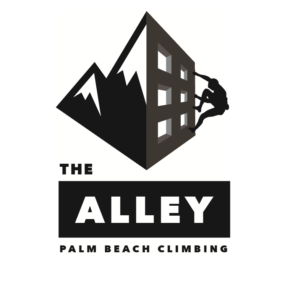 “It’s another outside element that I feel like the city needs,” Scott told My Palm Beach Post. “We have sun, it’s warm, we under-utilize that element of our environment. As a business generator, a community spot, it’ll be a great synergistic business with the coffee shop and the alley.”
The partners’ company, Palm Beach Climbing, LLC, will pay the city rent starting at $14,000 a year for use of the side of the garage. He estimated the removable panel wall will cost $300,000 to fabricate and install.
They hope to be open in spring of 2017.
“It’s another outside element that I feel like the city needs,” Scott told My Palm Beach Post. “We have sun, it’s warm, we under-utilize that element of our environment. As a business generator, a community spot, it’ll be a great synergistic business with the coffee shop and the alley.”
The partners’ company, Palm Beach Climbing, LLC, will pay the city rent starting at $14,000 a year for use of the side of the garage. He estimated the removable panel wall will cost $300,000 to fabricate and install.
They hope to be open in spring of 2017.
 “It’s another outside element that I feel like the city needs,” Scott told My Palm Beach Post. “We have sun, it’s warm, we under-utilize that element of our environment. As a business generator, a community spot, it’ll be a great synergistic business with the coffee shop and the alley.”
The partners’ company, Palm Beach Climbing, LLC, will pay the city rent starting at $14,000 a year for use of the side of the garage. He estimated the removable panel wall will cost $300,000 to fabricate and install.
They hope to be open in spring of 2017.
“It’s another outside element that I feel like the city needs,” Scott told My Palm Beach Post. “We have sun, it’s warm, we under-utilize that element of our environment. As a business generator, a community spot, it’ll be a great synergistic business with the coffee shop and the alley.”
The partners’ company, Palm Beach Climbing, LLC, will pay the city rent starting at $14,000 a year for use of the side of the garage. He estimated the removable panel wall will cost $300,000 to fabricate and install.
They hope to be open in spring of 2017. FrictionLabs Expands to Europe
PRESS RELEASE
DENVER, Colorado (July 12, 2016) Today, FrictionLabs announced the launch of seven websites that allow European climbers to purchase its products online with fulfillment directly from Europe. For the first time, climbers the U.K. and Europe will be able to purchase FrictionLabs chalk online with drastically reduced shipping and import costs and enhanced delivery reliability.
“Our mission is peak performance for every athlete who benefits from better grip, and climbers in Europe are a huge part of that constituency,” said Keah Kalantari, cofounder of FrictionLabs.
“After months of effort and coordination with our European partners, we finally have a way to get our chalk on the hands of U.K. and EU climbers affordably and reliably.”
FrictionLabs will launch ecommerce websites in seven countries:
Austria: www.frictionlabs.at
France: www.frictionlabs.fr
Germany: www.frictionlabs.de
Italy: www.frictionlabs.it
Sweden: www.frictionlabs.se
Spain: www.frictionlabs.es
United Kingdom: www.frictionlabs.co.uk
Climbers who live outside of these countries can also place orders on any of these websites.
“Our chalk allows climbers to use less and do more,” said Kevin Brown, cofounder of FrictionLabs. “European climbers are among the most dedicated and discerning in the world and we’re thrilled to make the highest quality chalk available to them.”
FrictionLabs was founded in 2014 by Kalantari and Brown, both rock climbers themselves. They worked with teams of scientists to research chalk and found that most chalk products come from Asian factories with no verification of the purity. Kalantari and Brown decided to form the first company to purify chalk in Denver, Colorado. Their clean chalk quickly won over professional climbers including Dave Graham, Daniel Woods, Rustam Gelmanov, Arnaud Petit, Magnus Midtbo, Paul Robinson, Megan Mascarenas, Joe Kinder, Rannveig Aamodt, Alex Puccio, and others.
About FrictionLabs:We make clean, efficient chalk for athletes who demand better grip. Chalk up less, perform at your best, and keep your hands healthy and strong. Use Less. Do More. To learn more about us, visit www.frictionlabs.com and follow us on Facebook(facebook.com/frictionlabs), Instagram (instagram.com/frictionlabs), and Twitter (twitter.com/frictionlabs).
North Face Awards Grant to Adaptive Climbing Group
Paradox Sports announced that The North Face has awarded a 2016 Explore Fund grant to support their adaptive climbing experiences in National Parks. The grant from The North Face Explore Fund will specifically support the organization’s commemorative 9/11 trip to Yosemite National Park and a new program coming spring 2017 to Joshua Tree National Park.
“Our goal is to make climbing in our National Parks accessible for everyone and this grant makes it possible for Paradox Sports to not only improve our already popular Yosemite Experience, but to establish new empowering opportunities for people with disabilities in Joshua Tree next year,” said Mike Neustedter, Executive Director for Paradox Sports.
To celebrate the National Park Service Centennial, Paradox Sports is activating a brand new program in the spring of 2017 in Joshua Tree National Park with the goal of bringing people to play, learn and serve in these spaces. This trip is a first of its kind program that teaches adaptive climbers the technical skills they need to increase their independence as climbers. The grant will also be supporting expansion of the annual Yosemite National Park Experience which brings veterans, as well as non-veterans with disabilities, together for a long weekend of climbing over 9/11 in one of the most iconic climbing destinations in the country.
The North Face selected a total of 45 nonprofits that engage their participants in opportunities that inspire a lifelong love of the outdoors. Selected programs use outdoor exploration as a catalyst for positive personal or societal change, to encourage participants to try new outdoor activities, and promote environmental stewardship values. The Daily Camera reported that the grant was in the form of $15,000.
“Encouraging people to experience and enjoy the outdoors has been our mission at The North Face since we were founded 50 years ago,” said Ann Krcik, senior director of Outdoor Exploration at The North Face. “We are proud to support these outstanding programs that expose participants to the beauty and joy of the outdoors. Through these Explore Fund grants, we are building a community of outdoor explorers and inspiring people to love and protect the places where we play.”
Paradox Sports was established in 2007 to revolutionize lives through adaptive climbing opportunities that defy convention. Paradox Sports works to identify, foster and grow communities of adaptive climbing and mountaineering athletes across the country. In 2015, the program impacted over 450 people nationally through adaptive climbing experiences and the cutting edge adaptive climbing trainings in 16 different states. Paradox Sports doesn’t ask what you don’t have, we say “show us what you got!”
As part of its mission to start a global movement of outdoor exploration, The North Face introduced Explore Fund (www.explorefund.org) in 2010 and the program has since provided more than $2.2 million in grants to organizations committed to inspiring people to explore the outdoors and care for the environment.
To learn more about Paradox Sports and our commemorative 9/11 Yosemite Trip or the new Joshua Tree camp, please visit www.paradoxsports.org.
How To Keep Seeing CBJ
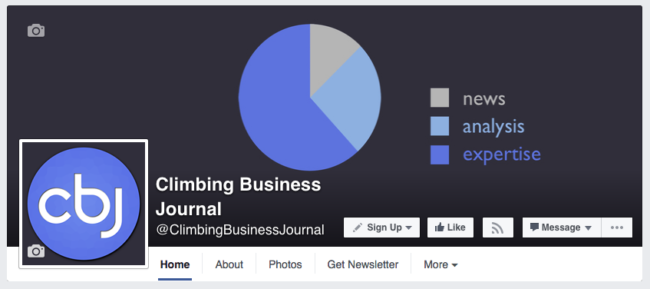 Hey there CBJ readers! We wanted to let you know that Facebook has changed its algorithm to put a higher priority on content shared by family and friends over content shared by media outlets. Since we don’t have the money that many other outlets have (like Buzzfeed, Time, Conde Nast, Etc.), we cannot pay Facebook to promote our posts. This means that you will likely see less CBJ articles on your newsfeed.
The good news is that you can tweak your settings just a bit to make sure you keep seeing our articles!
Here are some easy instructions for how to keep CBJ on your newsfeed:
Go to the CBJ Facebook page and make sure the box marked “Like” is checked.
Hey there CBJ readers! We wanted to let you know that Facebook has changed its algorithm to put a higher priority on content shared by family and friends over content shared by media outlets. Since we don’t have the money that many other outlets have (like Buzzfeed, Time, Conde Nast, Etc.), we cannot pay Facebook to promote our posts. This means that you will likely see less CBJ articles on your newsfeed.
The good news is that you can tweak your settings just a bit to make sure you keep seeing our articles!
Here are some easy instructions for how to keep CBJ on your newsfeed:
Go to the CBJ Facebook page and make sure the box marked “Like” is checked.
 If you’re on a computer, hover over the down arrow on what looks like a “wifi” symbol and select the “See first” option. If you’re on a phone, click on the “Following” button and select the “See first” option.
If you’re on a computer, hover over the down arrow on what looks like a “wifi” symbol and select the “See first” option. If you’re on a phone, click on the “Following” button and select the “See first” option.
 And that’s it! Now you’re all set to see great CBJ articles and links every day.
And that’s it! Now you’re all set to see great CBJ articles and links every day.
From Weird To Smart: So iLL Grows Up
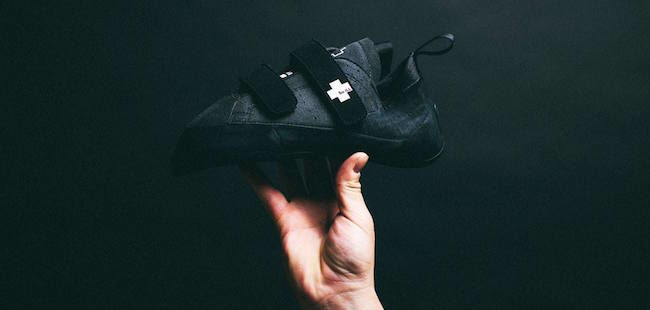
Be Your Own Customer
After starting their So iLL Climbing gym in St. Louis, Missouri in 2012, the Chancellors started seeing aspects of themselves in the customers that were walking through their doors. “The demographic is us,” Daniel Chancellor told CBJ during an interview at the the CWA Summit in May. Both the customers and the founders are young professionals that ride bikes to the gym and drink craft beer after a session. More importantly, they are not all that interested in the newest lightweight carabiners or the next generation of cams or a better handling rope; they want products they can use in the gym that are fashionable and were designed with the gym climber in mind.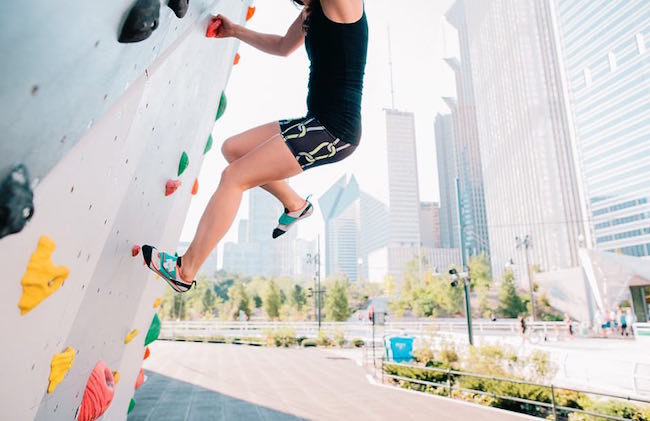
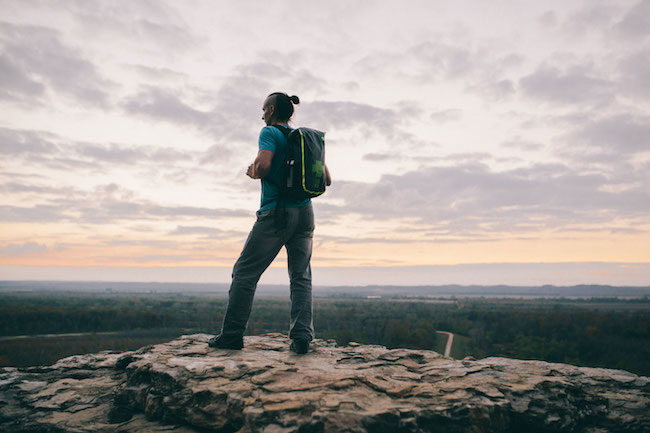
Shoes and design
If you tried to tailor a product for every user group in a climbing gym, including staff, that is essentially what So iLL is trying to do. Climbing holds and setting buckets for the routesetters; quickdraws and ropes for the sport climbers; crashpads and chalk pots for the boulders; rings and hangboards for the trainer; yoga pants for the yogis; and dry bags for all them to haul all of it to the gym. Despite all these products, a climbing shoe line was a missing component to the company’s growing array of lifestyle products. The brothers knew that their customers wanted fashionable, hip climbing shoes that were tailor made for climbing in the gym. Daniel felt that the major shoe brands were trying to do something different and interesting, but not quite succeeding. “I felt like they kinda didn’t know what to do,” he said. He pointed to several examples of brands trying to mix up their style including adding splatter paint. “This is going backwards, this is not clean, this is not simple, this is not creative,” he said.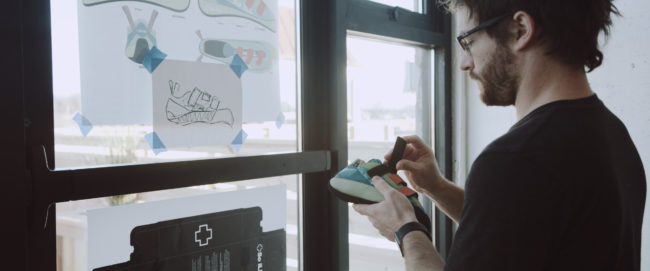
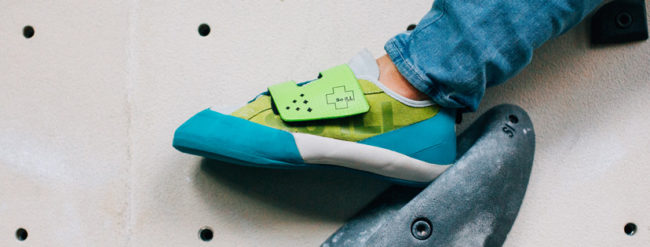
Paying Dues – Growing up
When Daniel Chancellor looks back at when he started the company, he gets embarrassed. “We were punks, we were skateboarders, we were climbers. We didn’t know, I mean, I was 18 years old man, we didn’t know anything!” he said. Being artists with an entrepreneurial inclination, they had an idea to do something different and at the time that resulted in really weird and interesting holds. Chancellor may look back with some resignation at those early designs, but by challenging the status quo they changed the indoor climbing environment. Since literally anything could now be a climbable object, shapers were free to let go of their self-imposed creative limits; because there were now brains and babyheads on the wall, routesetters started to break free from traditional rock climbing movement (the bouldering boom and competitions helped with this too). More importantly, all that unbridled creativity and the naivety to try crazy ideas has helped them get to where they are today. “I needed all those experiences through all those phases to get to the big deal … and shoes are the big deal,” he said.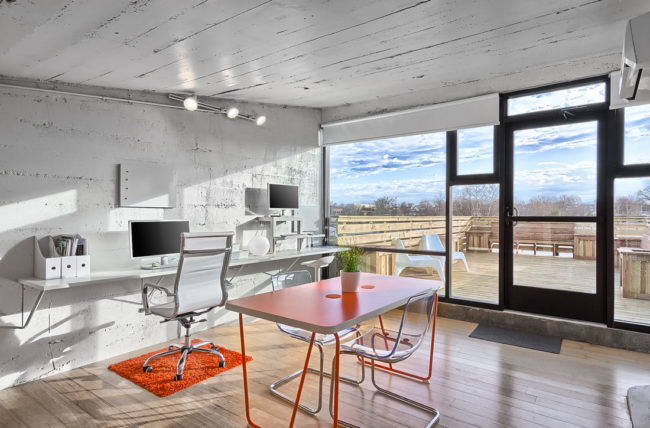
“I think the Chancellor brothers’ success results from a combination of traditional reasons for success in business, and other more unique factors. There’s the strong traits of being relentlessly hard-working and motivated, and I assume most people that are successful in business have those characteristics. But then there’s also the attitude they have of doing it their own way and with that, being confident in their own perspective and vision. I think the latter is particularly important with the sport and lifestyle and then the business of climbing too.”With the launch of a consumer climbing shoe So iLL is attempting to take their brand to the next level. From their early days as a scrappy climbing hold producer — essentially a business to business endeavor — they are looking to become a top retailer for indoor climbers. With their boldly branded selection of ropes, chalk bags, yoga pants and now climbing shoes, they are off to a good start. To get to the top, and stay there, is another matter. Bigger, more established companies also have their eyes on the growing indoor climbing market. To compete successfully, the Chancellor brothers will need to take to heart every lesson they’ve learned through every product launch they’ve had. What sets them apart from other indoor climbing brands is that they are the user and the producer of every product they sell. Everyday they see their products being used in their gym and they relate to the people using the products. “All came from actually doing it. By being in the space,” Chancellor said. “This is what I envisioned from the beginning and now we’re here.”
Momentum Breaks Ground in Texas







